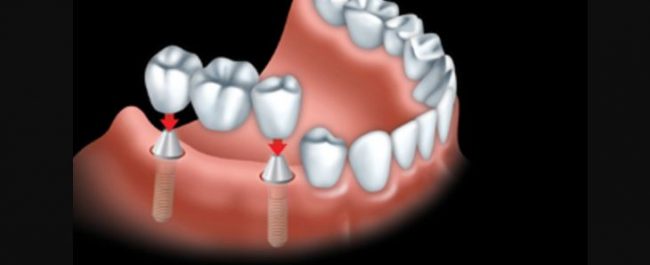Getting a Dental Crown? Here’s What you Should Know
If you need a dental crown to repair or protect a tooth, don’t worry. Modern dental techniques can make the procedure go smoothly and relatively painlessly.
What is a dental crown?
A crown is basically an artificial, hollow tooth that’s used to cap and repair a damaged one. The damage may have been from a required root canal, a very large filling that doesn’t leave enough healthy tooth behind to hold the filling, or a bad injury to the tooth. Sometimes they’re used for cosmetic reasons, to improve the appearance of an oddly-shaped or discoloured tooth. Additionally, they can be used to provide added strength to a weak tooth that’s at risk of breaking.
Different types of crowns
Crowns can be made of many different materials, including porcelain (100% porcelain, or porcelain that’s been fused to metal), ceramic, resin, metal (ex. gold) or stainless steel. Your dentist will be able to tell you which material is best suited to your situation and why.
MORE: For more information on crowns, check our our page on Restorative Dentistry and visit the Canadian Dental Association page here.
What to expect from the procedure
To make your experience as comfortable as possible, your dentist will provide you with a local anesthetic. If you’re very nervous about undergoing the process and think that you require sedation, be sure to discuss this with the dentist ahead of time.
The tooth that will be receiving the crown will be filed down a bit, and an impression of that tooth, along with neighbouring teeth, will be taken. This custom impression will be used to mould a crown that’s the perfect fit for your mouth.
While you’re waiting for the permanent crown to be ready, you’ll get a temporary crown to tide you over.
As you can imagine, from start to finish, getting a crown generally takes two dental visits or more, depending on the complexity of the work needing to be done.
The good news is that crowns tend to be long-lasting – you can expect then to last a decade or more if you take good care of them. That being said, they’re never going to be exactly as strong as a 100% natural tooth, so try not to bite on overly hard foods (for example, ice, hard candy, olive pits, or unpopped popcorn) or hard objects (including grains of sand that are sometimes stuck on fresh produce, such as leafy greens). You should also avoid using your teeth to open things (for example, hard plastic caps on bottles). Very chewy candies that have a habit of suctioning onto your tooth (crown) surface are probably also best avoided.
Don’t let those cautions worry you though. Although you should indeed treat your crown carefully so that it lasts as long as possible, it will feel like a normal tooth and generally function as well as one.
Do I have to brush and floss my crown?
Your crown should be taken care of just like a regular tooth. Brush it well and floss regularly, just as you would for every other tooth in your mouth. See your dentist at regular intervals for checkups and to get your teeth professionally cleaned.
Enjoy the natural look and feel of your new crown
Informing yourself about any dental procedure that you’ll be undergoing is always important, but don’t let the technicalities of it put you off. Your dentist has the experience and knowledge to ensure everything goes smoothly and comfortably for you. And once your crown has been put on, you’ll enjoy the natural look and feel of that tooth for many years. That sure beats living with a damaged or unsightly tooth so go with confidence!
If you’re in the Oakville, Milton or Burlington area and would like to visit our dentists call us today or book a visit online!


